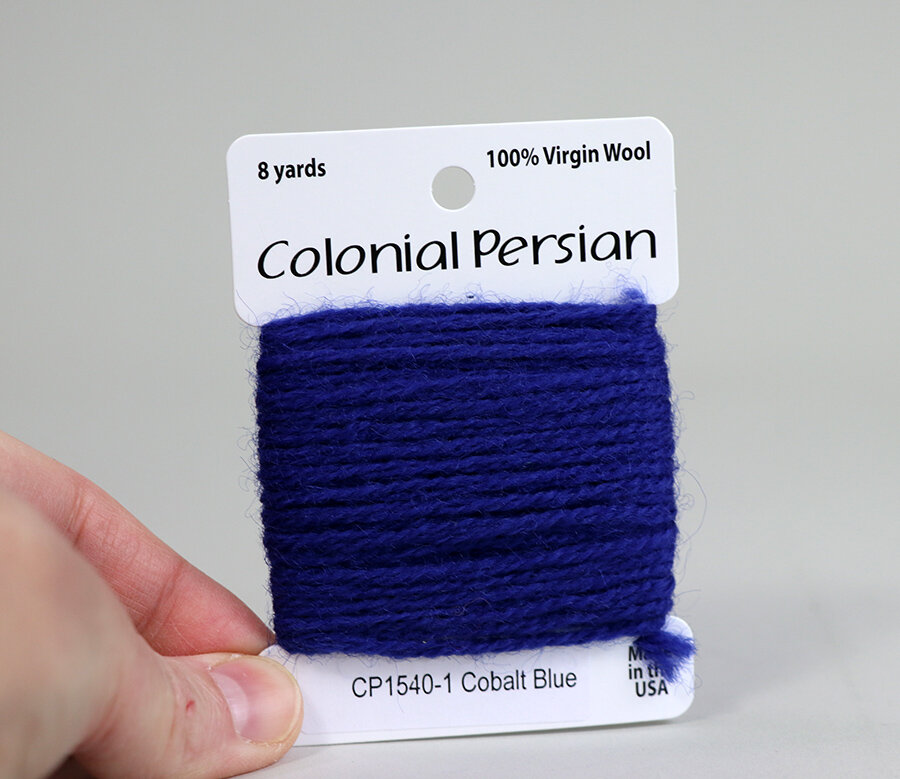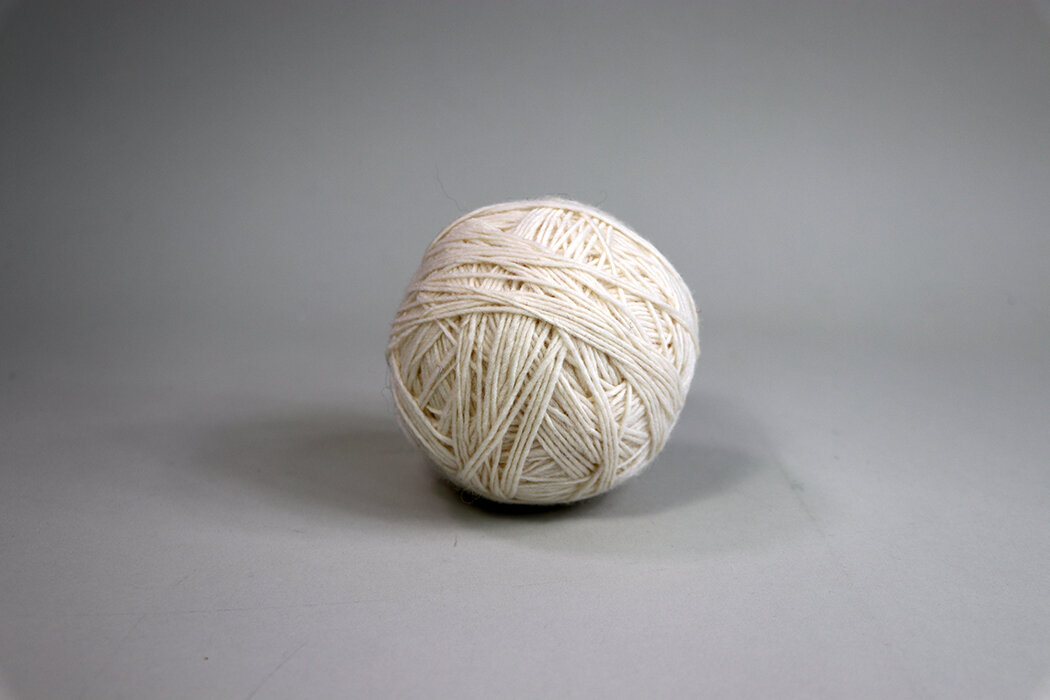Yarn comes in many forms. If you saw the video I did last week about making yarn balls, you’ll realize that there are different ways your yarn might come packaged. Many of those forms are usable just as they are, but one particular configuration is almost impossible to use without transforming the yarn into a different shape, the skein or hank.
How a yarn is packaged is called put-up. That just means that it comes in a skein, on a cone, on a tube, in a cake or ball, or wound on a card. The image and gallery below shows those various put-ups.
Yarn put-ups include cone, card, tube, ball, cake, and skein (or hank)
Click the images below for enlarged images and hover for captions.
For use in tapestry weaving, all of these put-ups with one exception will work right out of the package. Skeins (sometimes called hanks) are not intended to be used as they are. Perhaps unfortunately, this is also the most frequent put-up of yarn. It is likely you are going to have to transform your skeins into something that is less likely to become a tangled mess as you use it.*
The diagram below shows you what equipment you need to turn one put-up into another. Below that I explain each.
Click this image to open it in a lightbox so it is larger.
If you are patient and have a way to hold the skein open, you can make a round ball as pictured in the gallery without any further tools. A helper to hold the skein for you as you wind is helpful but you may be able to rig up some furniture to hold the skein open while you make your ball. If you want a much more efficient way of making your skein into a ball, you’ll need two simple tools: a swift and a ball winder. If you need to create skeins for dyeing or other purposes, a third tool, a niddy noddy, is useful.
Using a swift
A swift holds the skein open and rotates so the skein automatically turns as you wind. Your skein goes on the swift and it rotates as you wind the yarn into another form, most often a ball. An umbrella swift is a great tool. It collapses for easy storage and opens to accommodate a variety of skein sizes.** (To see a swift and ball winder in action, see THIS video.)
Umbrella swift collapsed
Umbrella swift expanded to hold a skein of yarn
Using a ball winder
I described this tool in last week’s blog post and video. This tool makes a center-pull ball. Sometimes this is called a cake because it has a flat top and bottom. This is another advantage of using a ball winder over hand-winding your yarn. You can use the yarn from the center or the outside of the ball (or both!).
Ball winder for making balls or cakes of yarn
Using a niddy noddy
The third tool is a funny little number called a niddy noddy. There are instructions for making these out of PVC and other materials online, but I do like a nice smooth wooden one because it allows the yarn to slide off easily. A niddy noddy makes skeins. Why might you need to make a skein? If you are a dyer or if you need to scour your yarn before using it (see footnote*). You might also use it if you have a reason to make smaller skeins perhaps because you’re dividing yarn between friends (though in that case, why not ball it?).
Different size niddy noddys make different size skeins. The larger the tool, the bigger around the skein will be. At some point the skein will be too big to fit on your swift, so one that makes 1 to 2 yard skeins is fine.
A niddy noddy makes a skein.
Most of you will only need an umbrella swift and ball winder. If you’ve been winding balls by hand, they’ll change your yarn-y world!
*The other exception is yarn on cones that is intended for weaving functional textiles. This yarn sometimes still has oil in it from the machining process because the company assumes you are going to wash the woven or knitted garment before use. One popular tapestry yarn for which this is true is Harrisville Highland or Shetland. This only applies to the yarn you get on cones. The yarn in skeins from Harrisville is identical and has been washed already. You might purchase Harrisville Highland or Shetland on cones because it is cheaper that way. And if you do, you’ll want to scour it before use. This blog post explains how to do that: https://rebeccamezoff.com/blog/2019/10/21/how-to-scour-yarn-for-tapestry-weaving.
The oil in the yarn is an organic mix of something akin to olive oil. It isn’t toxic or harmful, it just mats the fibers down and does have a bit of a smell. I recommend scouring your tapestry yarn before weaving with it because it is unlikely you are going to wash a tapestry.
**No, the circumference of skeins is not standard. Some skeins are tiny circles, some very large. Most commercial skeins will fit on a standard umbrella swift.






